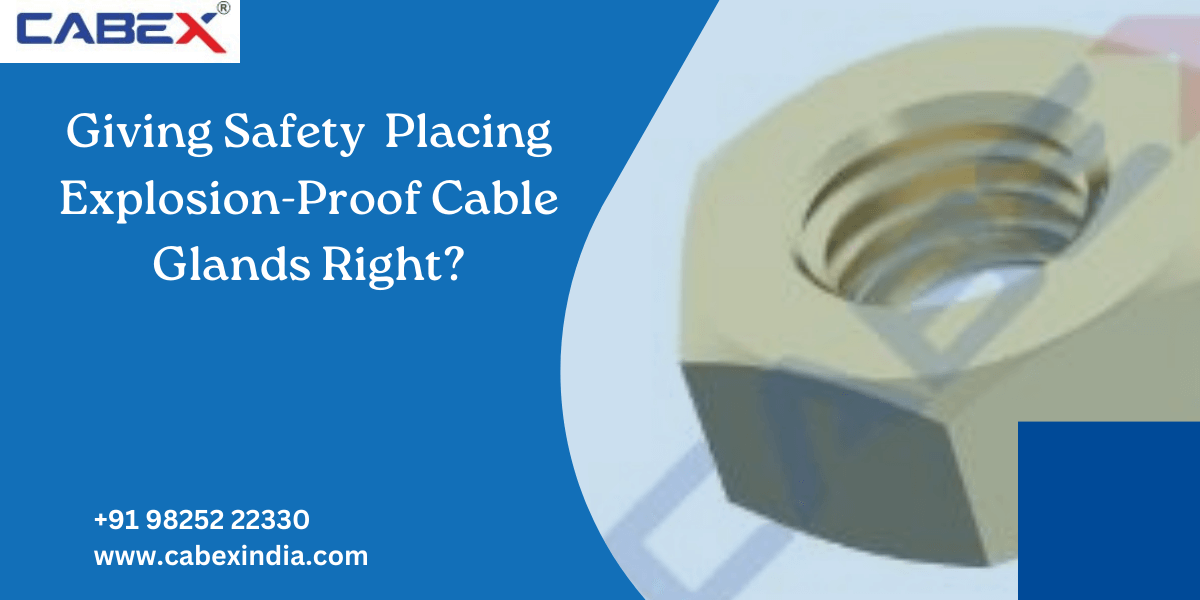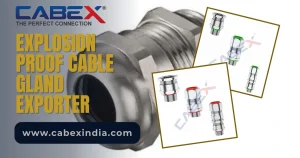Introduction
In the intricate landscape of industrial safety, explosion-proof cable gland installation stands as a pivotal process, ensuring not just operational continuity but also the protection of invaluable assets and, most importantly, human lives. As industries navigate through stringent safety regulations and evolving technological advancements, the significance of correctly placing explosion-proof cable glands cannot be overstated.
Understanding the Essence
Before delving into the nuances of explosion-proof cable gland installation, it’s imperative to grasp the essence of these components. Explosion-proof cable glands serve as crucial elements in hazardous environments where the potential for explosions looms large due to the presence of volatile substances such as gases, vapours, or combustible dust. These glands are meticulously designed to contain any explosion within the enclosure, preventing it from propagating into the surrounding atmosphere.
Key Considerations
Environmental Classification
Explosion-proof cable gland installation begins with a thorough understanding of the environmental classification. Various hazardous locations are categorised based on the nature and extent of the explosive atmosphere present. Classifying the area correctly ensures the selection of appropriate explosion-proof cable glands, tailored to withstand specific environmental challenges.
Material Selection
The choice of materials plays a pivotal role in explosion-proof cable gland installation. Opting for corrosion-resistant materials such as stainless steel or brass enhances durability and ensures long-term performance even in harsh industrial environments. Additionally, considering factors like temperature variations and chemical exposure aids in selecting the most suitable materials for the application.
Proper Sizing and Sealing
Explosion-proof cable glands come in various sizes to accommodate different cable diameters. Ensuring the correct sizing prevents cable strain and maintains the integrity of the installation. Moreover, employing effective sealing mechanisms such as compression seals or epoxy potting reinforces ingress protection, safeguarding against moisture and contaminants.
Compliance with Standards
Adherence to industry standards and regulations is non-negotiable in explosion-proof cable gland installation. Compliance with standards such as ATEX, IECEx, or NEC mandates rigorous testing and certification of the equipment, validating its capability to operate safely in hazardous environments. Prioritising certified products instils confidence in the reliability and effectiveness of the installation.
Installation Best Practices
Thorough Inspection
Before commencing explosion-proof cable gland installation, conducting a comprehensive site inspection is paramount. Identifying potential hazards, assessing environmental conditions, and reviewing equipment specifications lay the groundwork for a seamless installation process. Addressing any discrepancies or safety concerns at this stage mitigates risks and ensures a secure working environment.
Proper Cable Preparation

Effective explosion-proof cable gland installation begins with meticulous cable preparation. Stripping the cable to the required length, removing outer sheaths, and ensuring proper grounding facilitate smooth insertion into the gland. Attention to detail during this phase minimizes installation errors and optimizes the performance of the cable assembly.
Precision in Gland Placement
The precise placement of explosion-proof cable glands is critical to their efficacy. Positioning the glands at entry points where cables penetrate enclosures or junction boxes forms a robust barrier against hazardous elements. Maintaining adequate clearances and avoiding sharp bends in the cable pathway further enhances the integrity of the installation.
Secure Fixation and Tightening
Securing explosion-proof cable glands in place demands meticulous attention to fastening techniques and torque specifications. Over-tightening may compromise the integrity of the gland, while insufficient tightening risks loosening over time, potentially leading to hazardous conditions. Adhering to manufacturer guidelines and employing calibrated tools ensure optimal fixation without compromising safety.
Ongoing Maintenance and Inspection
Explosion-proof cable gland installation is not a one-time endeavour but a continuous commitment to safety. Implementing a robust maintenance and inspection regime is indispensable to detect any anomalies or deterioration promptly. Periodic visual inspections, electrical testing, and thermal imaging help identify potential issues before they escalate, ensuring uninterrupted operation and safeguarding personnel and assets.
Conclusion
In the realm of industrial safety, every component plays a pivotal role in fortifying defenses against potential hazards. Explosion-proof cable gland installation stands as a testament to proactive risk mitigation, embodying precision, diligence, and unwavering commitment to safety standards. By adhering to best practices, leveraging advanced technologies, and fostering a culture of vigilance, industries can navigate hazardous environments with confidence, giving safety the paramount importance it deserves.






